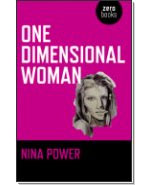Below is an excerpt from Nina Power’s One Dimensional Woman, in which she raises some interesting points and questions about the so-called Bechdel Test (or Ripley’s Rule, as we generally refer to it).
What does contemporary visual culture say about women? Here a thought experiment comes in handy: The so-called ‘Bechdel Test’, first described in Alison Bechdel’s comic strip Dykes to Watch Out For, consists of the following rules, to be applied to films, but could easily be extended to literature:
- Does it have at least two women in it,
- Who [at some point] talk to each other,
- About something besides a man.
Writer Charles Stross adds that
“if you extend #3 only slightly, to read “About something besides men or marriage or babies, you can strike out about 50% of the small proportion of mass-entertainment movies that do otherwise seem to pass the test.”
Once you know about the test, it’s impossible not to apply it, however casually. Stross is right–huge quantities of cultural output (possibly even more than he suggests) fail. Several questions emerge from the test:
-
What is so frightening about women talking to each other without the mediation of their supposed interest in men/marriage/babies?
-
Does cinema/literature have a duty to representation such that it is duty bound to include such scenes, as opposed to pursuing its own set of agendas? Why should literature/cinema be ‘realistic’ when it could be whatever it wants to be?
-
Does reality itself pass the test? How much of the time? Can we ‘blame’ films/TV for that?
Nina Power is a Senior Lecturer in Philosophy at Roehampton University. She has published widely on topics including Iran, humanism, vintage pornography and Marxism. (taken from the jacket cover of One Dimensional Woman.)

